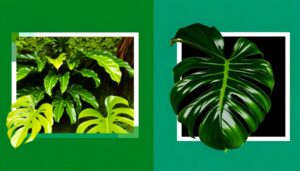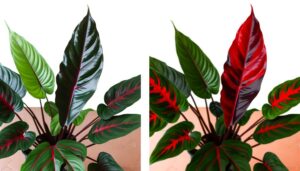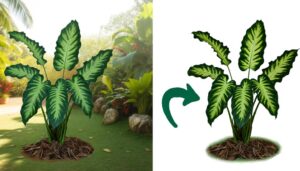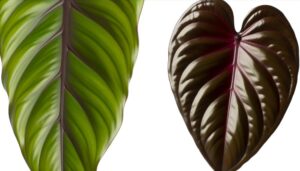Philodendron Cordatum Vs Micans: Key Differences Revealed!
Philodendron cordatum, native to Brazil, and Philodendron micans, originating from Mexico and the Caribbean, are distinct in various attributes. Philodendron cordatum features glossy, heart-shaped leaves and rapid climbing growth via aerial roots, whereas Philodendron micans exhibits velvety, heart-shaped leaves with varied pigmentation and a trailing habit.
Both species thrive in indirect bright light and require consistent, yet non-waterlogged soil moisture. They also offer air-purifying benefits.
These differences and shared characteristics offer insights into their unique suitability for various indoor environments. Learn more about their care and growth to make an informed choice.
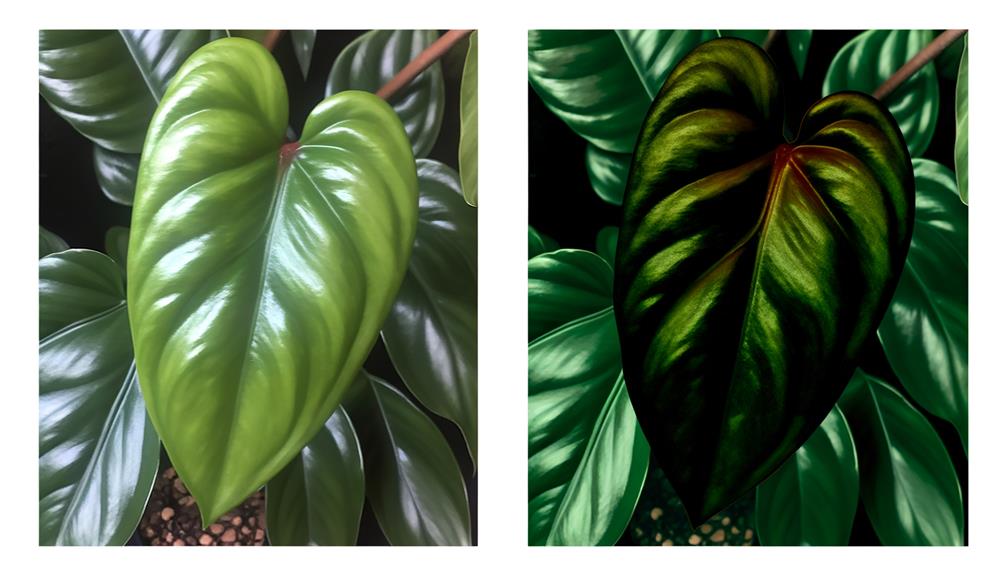
Comparison of Philodendron Cordatum and Philodendron Micans
| Feature | Philodendron Cordatum | Philodendron Micans |
|---|---|---|
| Scientific Name | Philodendron hederaceum | Philodendron hederaceum var. micans |
| Leaf Texture | Glossy | Velvety |
| Leaf Color | Green | Green with bronze/purple highlights |
| Leaf Shape | Heart-shaped | Heart-shaped |
| Growth Habit | Climbing/trailing | Climbing/trailing |
| Stem Structure | Thicker, sturdier | Leggier, more vining |
| Leaf Veins | Less prominent | Green veins |
| Leaf Underside | Green | Reddish hue |
Origin and Background

What distinguishes Philodendron cordatum and Philodendron micans is their distinct geographical origins and evolutionary histories within the diverse Araceae family.
Philodendron cordatum, native to Brazil, thrives in tropical rainforest ecosystems where it has adapted to understory conditions, optimizing its growth in low-light environments. This species exhibits typical characteristics of epiphytic plants, relying on other vegetation for physical support.
Conversely, Philodendron micans originates from Mexico and the Caribbean, regions characterized by diverse microclimates. Its evolutionary adaptations reflect a capacity to thrive in varied humidity and light conditions.
Both species have undergone significant phylogenetic divergence, resulting in unique morphological and physiological traits that underscore their adaptation to specific ecological niches within their respective habitats.
Leaf Appearance
Philodendron cordatum and Philodendron micans can be distinguished by their markedly different leaf morphology and pigmentation. Philodendron cordatum exhibits leaves that are heart-shaped (cordate), glossy, and uniformly green, with a smooth texture. The adaxial surface is typically shiny, reflecting light effectively.
In contrast, Philodendron micans presents leaves that are also heart-shaped but exhibit a velvety texture due to a fine layer of trichomes. The leaves of Philodendron micans display a more varied pigmentation, ranging from deep green to bronze or even purplish hues, depending on the light conditions. Additionally, the abaxial surface of Philodendron micans leaves often shows a reddish undertone, contributing to its distinctive appearance.
This morphological differentiation is essential for proper identification and classification.
Growth Habits
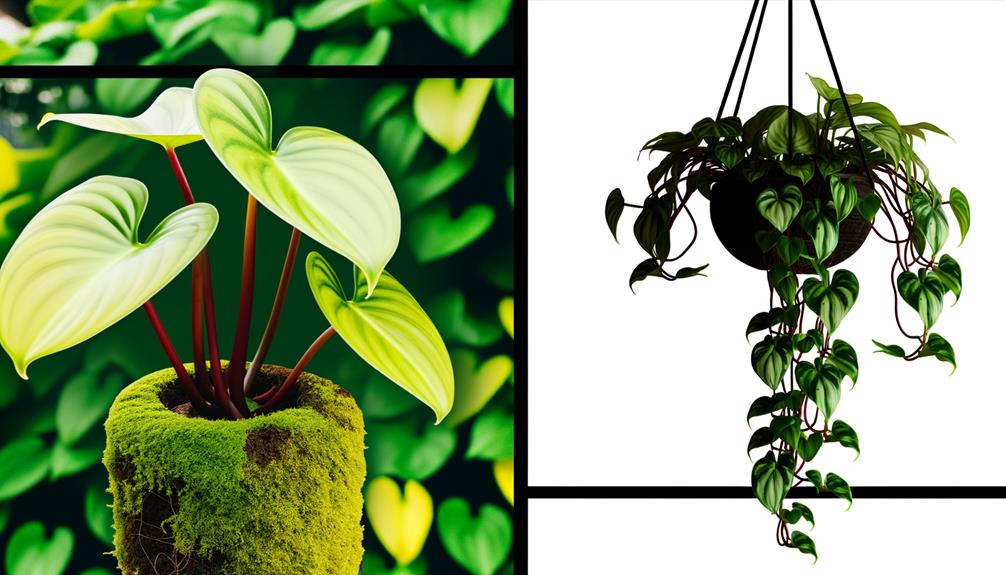
Beyond their unique leaf appearances, the growth habits of Philodendron cordatum and Philodendron micans also show significant differences, impacting their care and cultivation requirements.
Philodendron cordatum typically demonstrates a more robust climbing habit, using aerial roots to attach itself to support structures. This species exhibits rapid growth under ideal conditions, often requiring regular pruning to manage its size.
In contrast, Philodendron micans displays a trailing or cascading growth pattern, making it well-suited for hanging baskets or elevated planters. The growth rate of P. micans is relatively moderate, and it tends to produce new growth more conservatively compared to P. cordatum.
Understanding these divergent growth habits is essential for appropriate spatial planning and support systems in cultivation environments.
Care Requirements
Proper care for both Philodendron cordatum and Philodendron micans necessitates a nuanced understanding of their specific light, water, and soil requirements. Both species thrive in indirect, bright light but can tolerate lower light conditions. Overexposure to direct sunlight should be avoided to prevent leaf scorch.
Best watering involves maintaining a consistent moisture level without waterlogging the soil; allow the top inch of soil to dry out between waterings. A well-draining potting mix with a high organic content is essential to prevent root rot.
Both philodendrons benefit from moderate humidity levels, ideally between 40-60%. Fertilization should be done monthly during the growing season with a balanced, water-soluble fertilizer to promote robust growth and vibrant foliage.
Indoor Benefits

The lush, heart-shaped foliage of Philodendron cordatum and Philodendron micans contributes immensely to the improvement of indoor air quality by efficiently filtering airborne toxins. These species are particularly skilled at absorbing formaldehyde, benzene, and trichloroethylene, thereby purifying the surrounding environment.
Such capabilities render these plants invaluable for maintaining healthy indoor spaces. Their low light tolerance and minimal care requirements make them ideal for various indoor settings, including offices and homes.
- Air Purification: Effective removal of toxic volatile organic compounds (VOCs).
- Aesthetic Appeal: Their vibrant, velvety leaves add visual interest and sophistication.
- Low Maintenance: Adaptability to varying light conditions and infrequent watering needs.
Incorporating these philodendrons can greatly enhance both environmental quality and aesthetic value.
Conclusion
To sum up, the comparative analysis of Philodendron cordatum and Philodendron micans elucidates significant distinctions in origin, leaf morphology, growth patterns, and care requirements.
Both species, however, offer notable indoor benefits, contributing to air purification and aesthetic enhancement.
Yet, the question arises: Which species aligns more closely with specific horticultural and environmental objectives?
Understanding these differences enables informed cultivation choices, ensuring best growth and sustainability in indoor gardening contexts.

